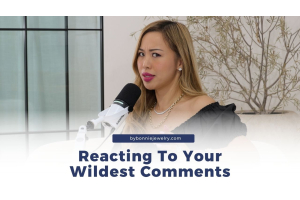Oval Diamond Engagement Ring Carat and Ratio Comparison Complete Guide
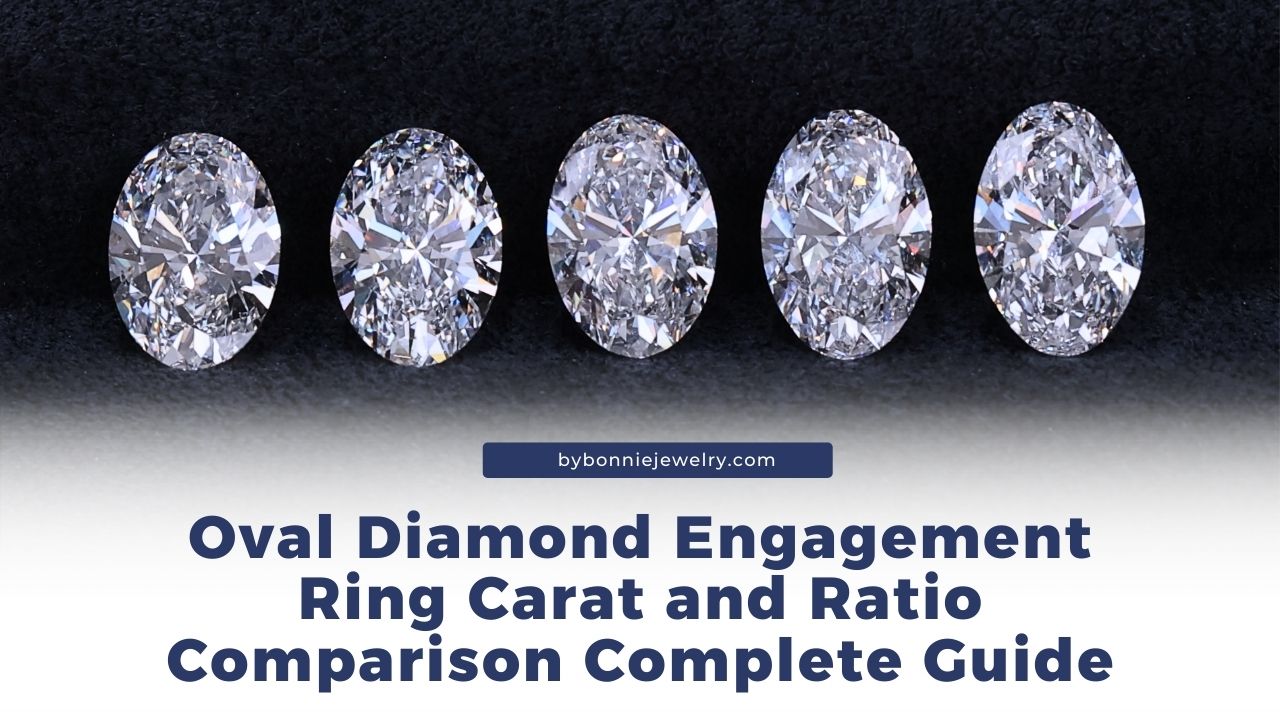
Hey there, diamond enthusiasts! If you're in the market for an oval diamond, you've come to the right place. In this blog post, I'm going to share some invaluable tips to help you avoid choosing an unattractive oval diamond. Plus, we'll delve into the concept of width-to-length ratio and how it influences the appearance of your diamond's size.
Welcome back to another By Bonnie Blog, your go-to destination for all things diamonds. Let's jump straight into the fascinating world of oval diamond ratios.
What Is Oval Diamond Ratio
Let's talk about diamond ratios!
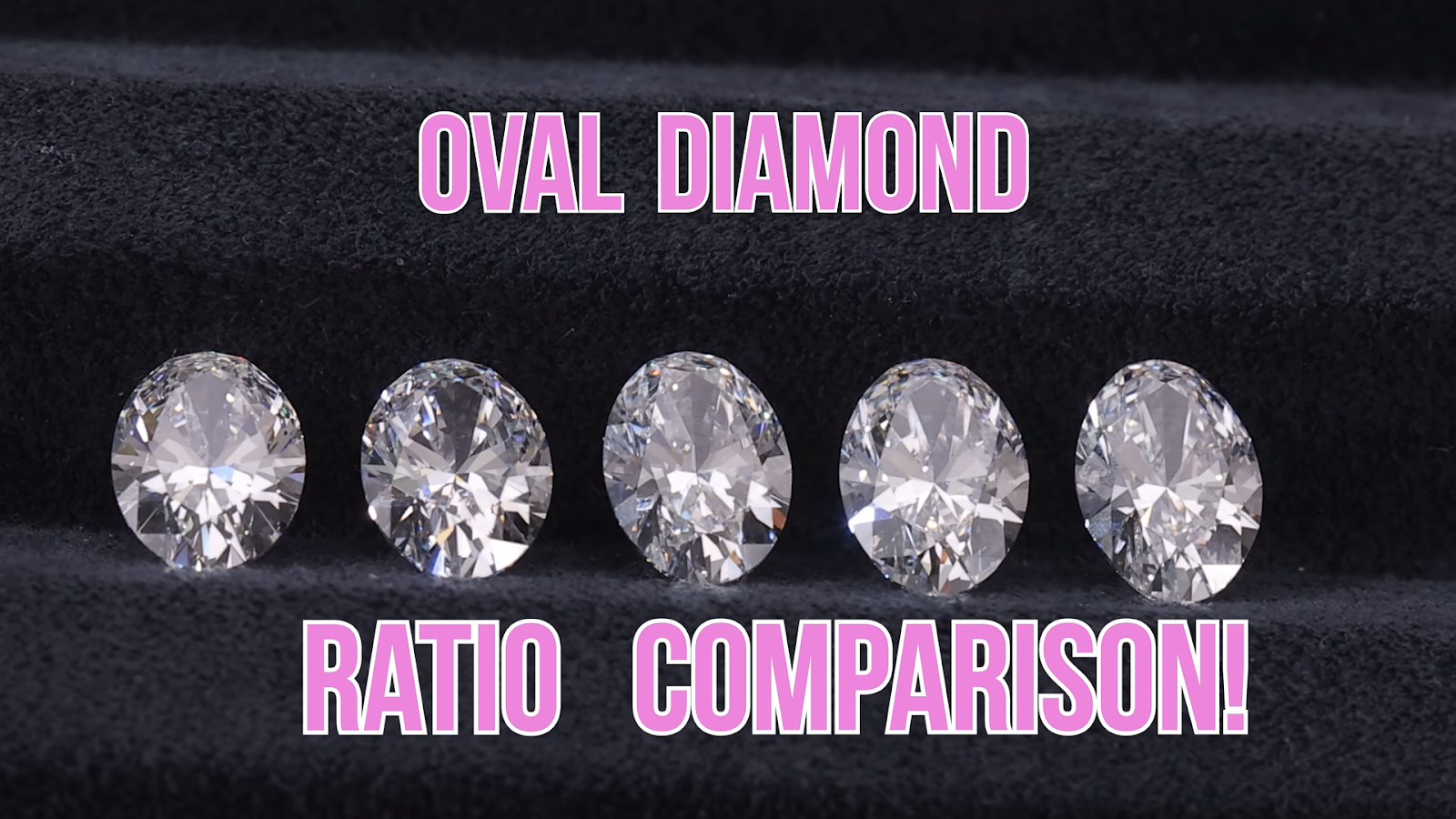

When we refer to a diamond's ratio, we're essentially looking at the relationship between its length and width. It's a simple calculation: just divide the length by the width, and voila! You'll get a number. The higher the number, the longer the diamond will appear.
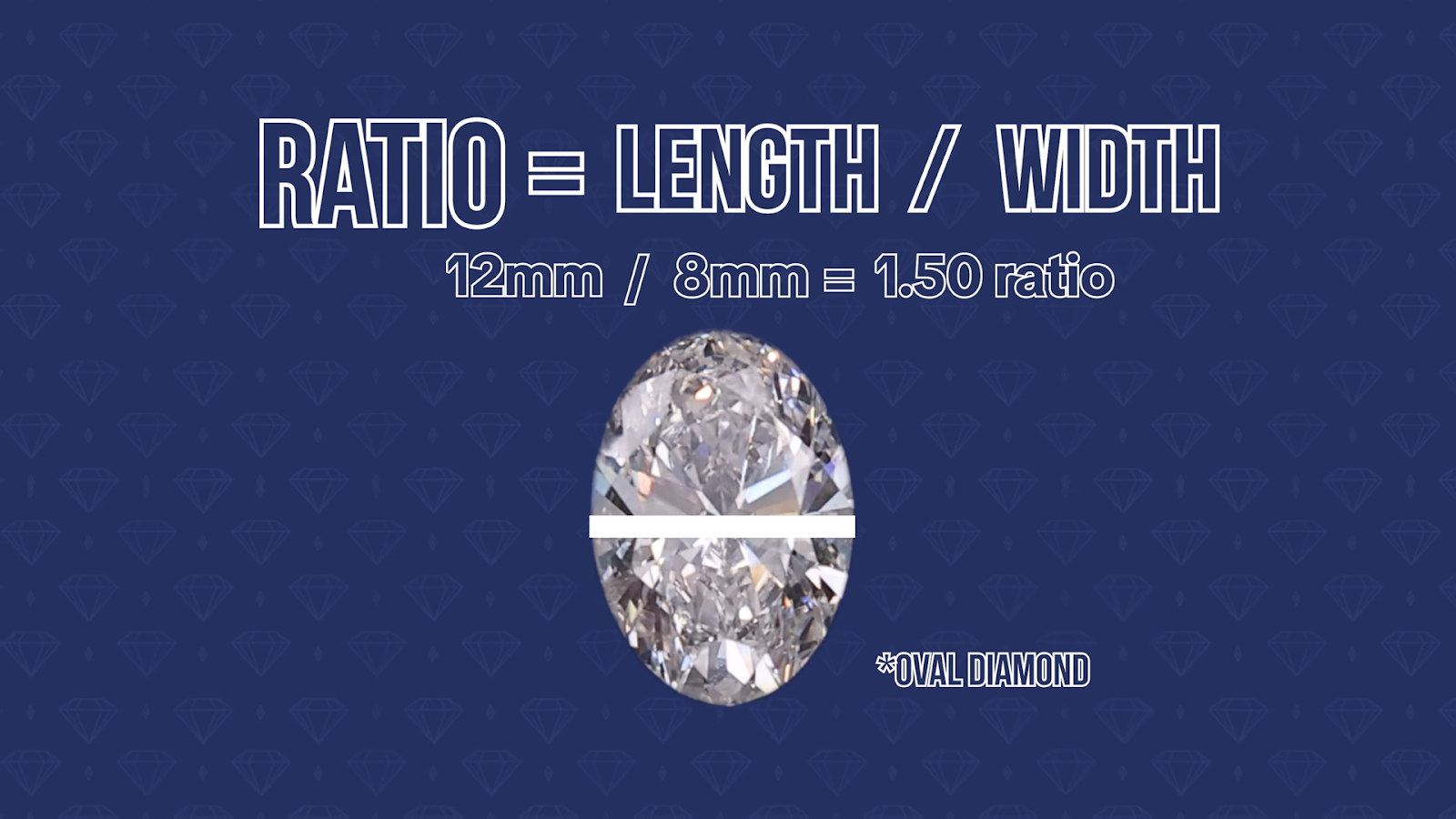

This principle applies not only to oval diamonds but also to other shapes like emerald cuts, radiant cuts, and pear shapes.
Don’t Focus Only On Carat Weight!
Let's talk about a common mistake: assuming that carat weight equals size. Here's the thing: when you're searching online for an oval diamond ring, you might type in a specific carat weight, like "2.5 carat oval diamond engagement ring." But here's the kicker—online retailers often don't provide tools to filter diamonds based on their ratio. So, what does this mean for you?
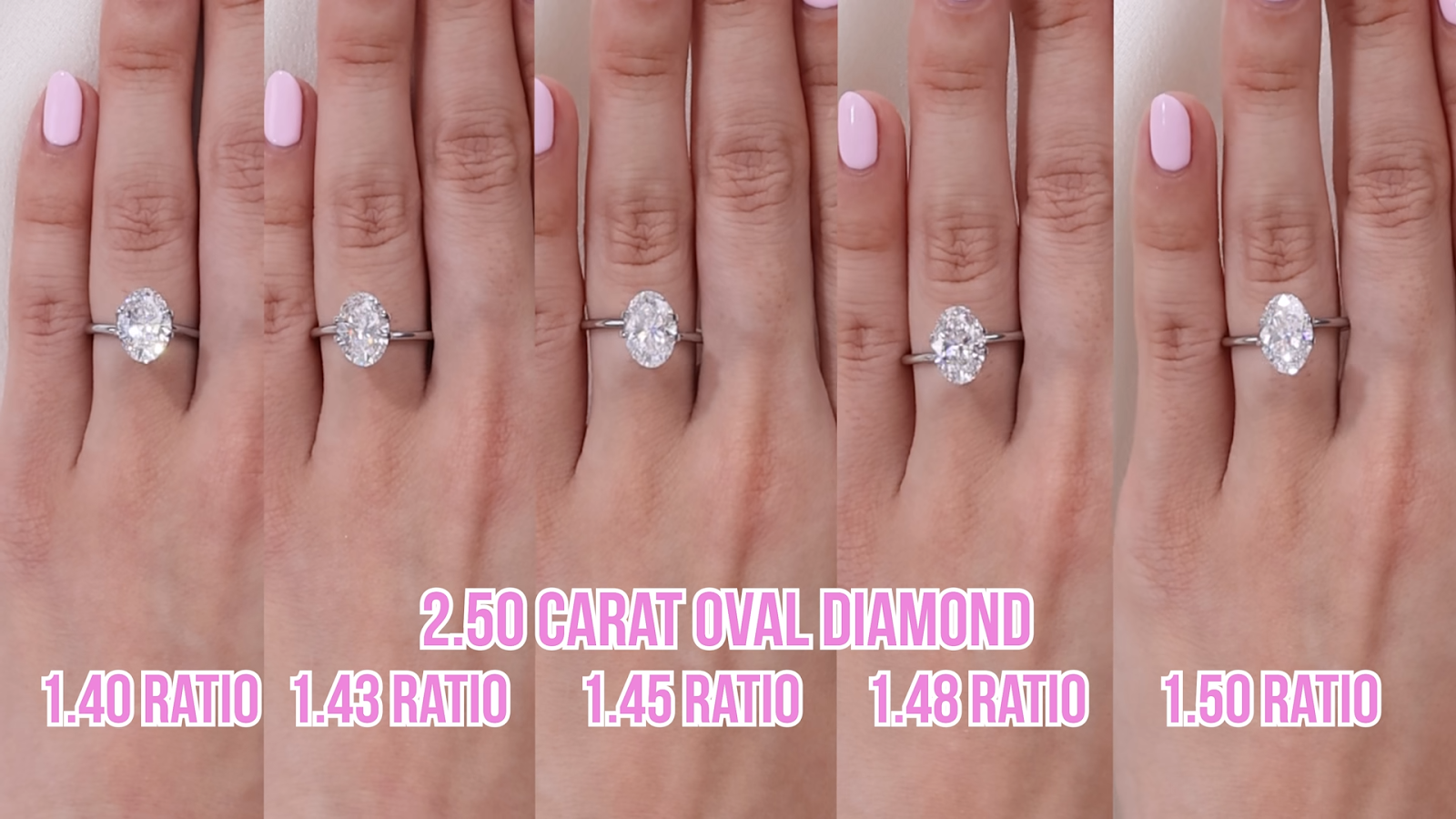

Imagine this: you're looking at five diamonds, all weighing 2.5 carats, with ratios ranging from 1.4 to 1.5. Now, you might be wondering, what's the difference? Well, here's the deal. Even though they're the same carat weight, a diamond with a 1.4 ratio will look shorter compared to one with a 1.5 ratio. And here's a pro tip: steer clear of diamonds with ratios in the low 1.3 range.
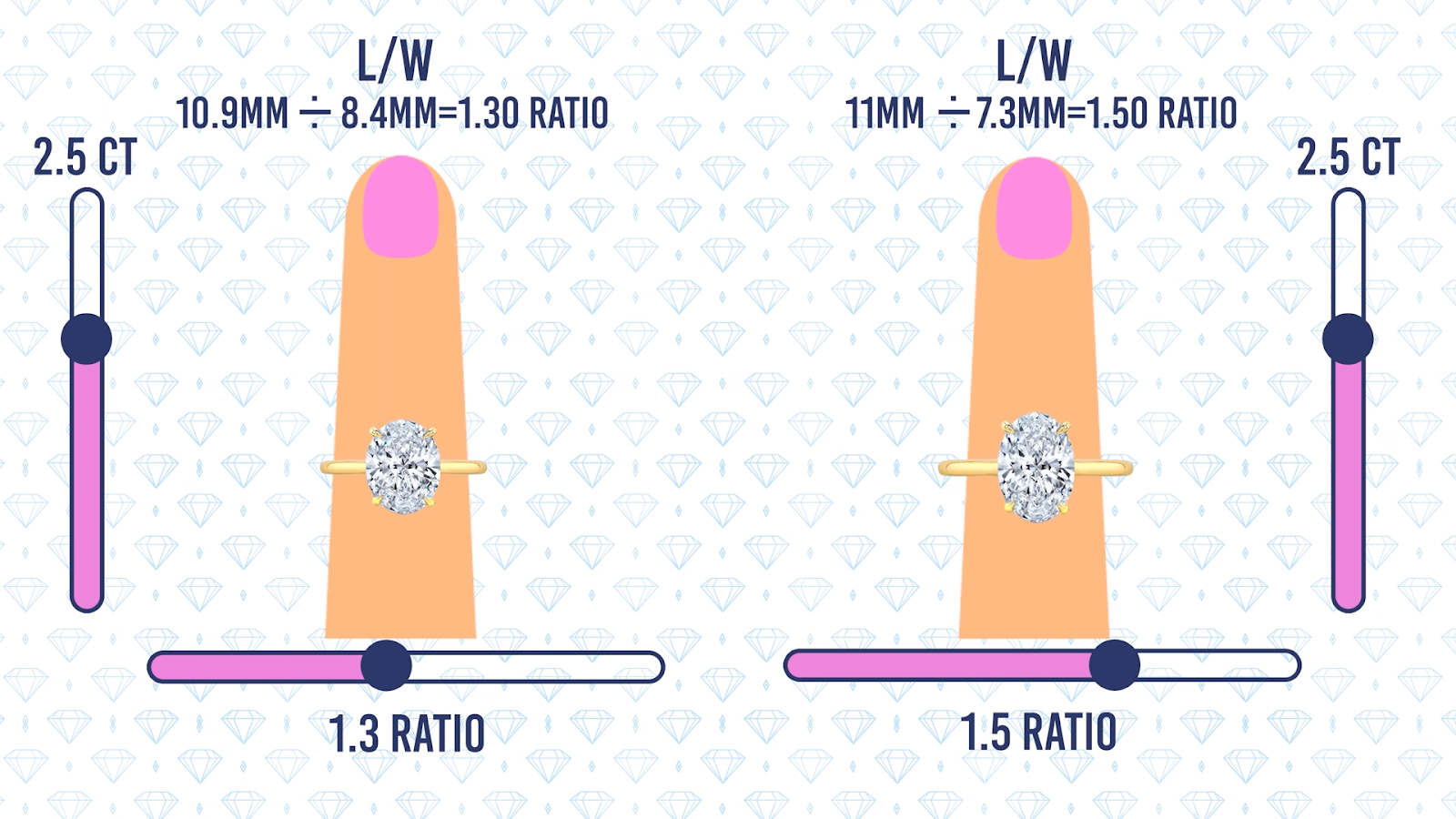

Why? Because all that weight is concentrated at the bottom of the stone, leading to problems like a heavy bow tie effect and reduced brilliance. So, when you're shopping for diamonds, remember to consider the ratio alongside carat weight to ensure you get the sparkle you deserve.
How To Choose The Correct Design
When you're in the diamond-buying game, don't overlook the measurements. Length and width matter more than you might think. By calculating these numbers, you'll get a ratio that reveals a lot about how your diamond will look. Now, let's examine some samples with different ratios.
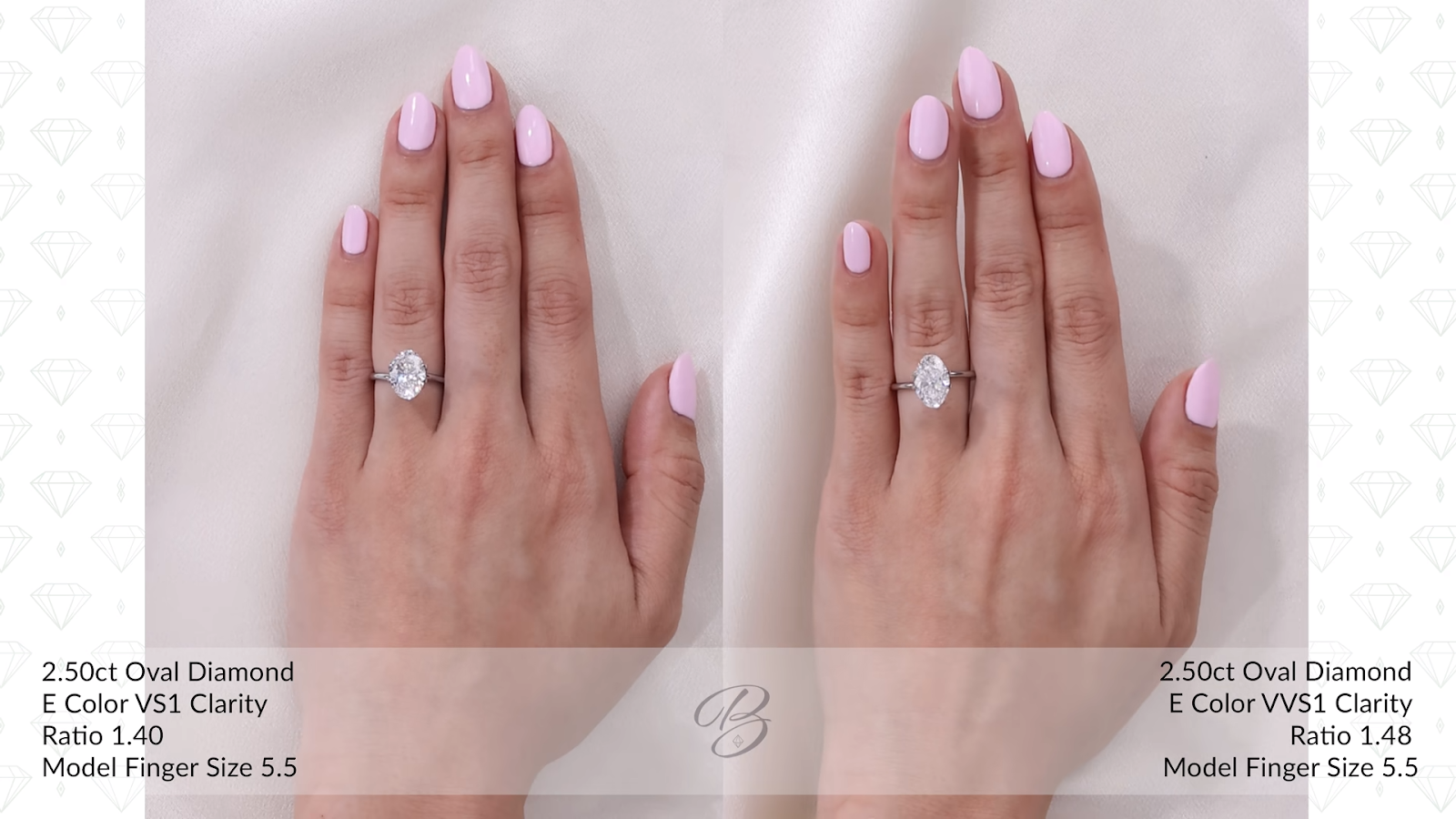

Between 1.41 to 1.43, the differences are subtle. But once you hit the range of 1.4 to 1.8, that's where things really start to stand out. To truly grasp the impact of ratio on your ring's appearance, I suggest trying it on and not just looking at a picture of the diamond on a website.
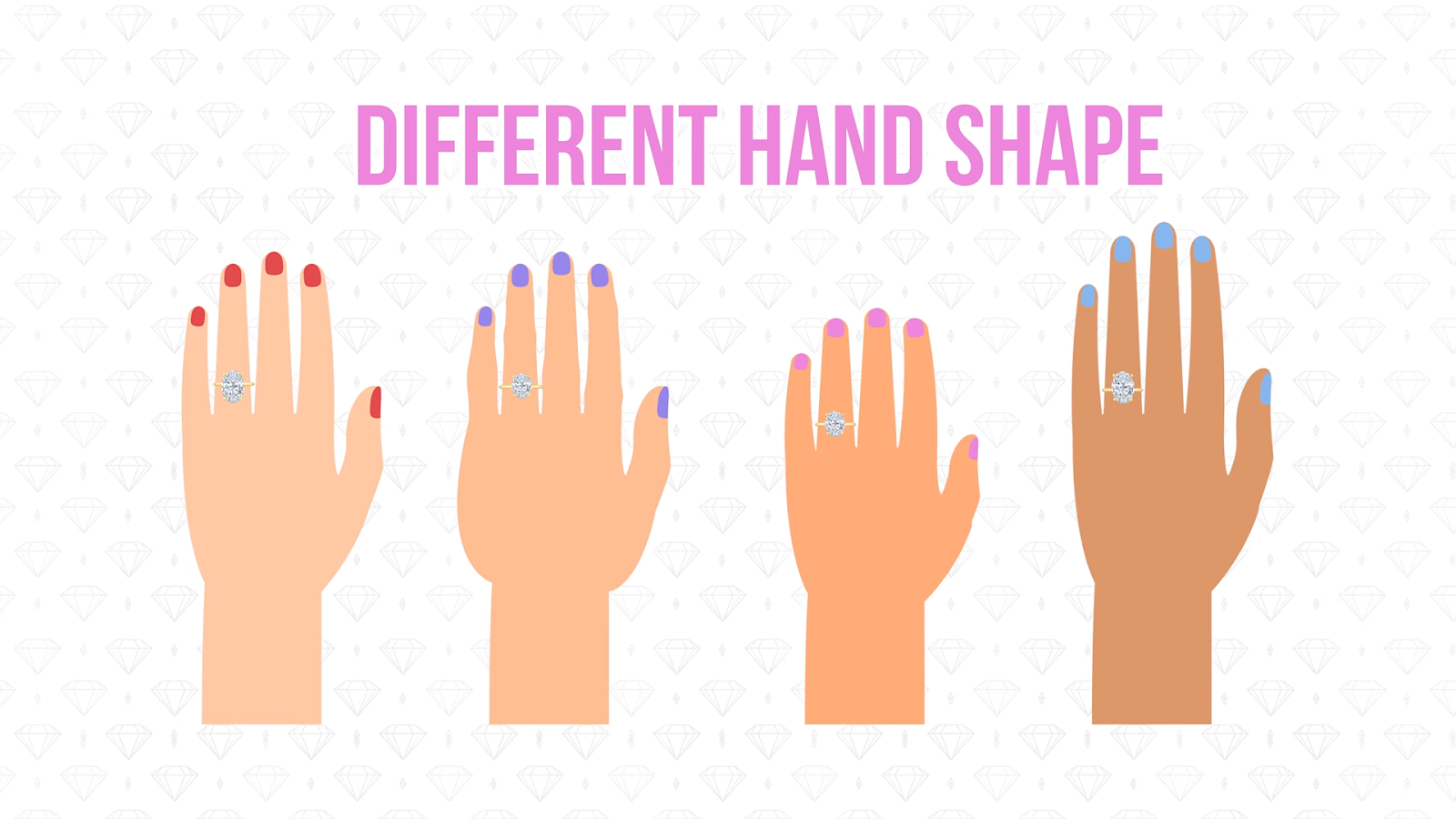

Now, onto considering your hand shape. If you have long, slender fingers, you'll likely want a diamond with more vertical coverage. But if your fingers are on the shorter side, go for something wider to make the most of your finger real estate. And if you're craving both length and width, the solution is simple: go bigger.
Another thing to ponder is the design of your piece. Are you envisioning an oval diamond ring, earrings, or a necklace? Each design preference may call for a different ratio.
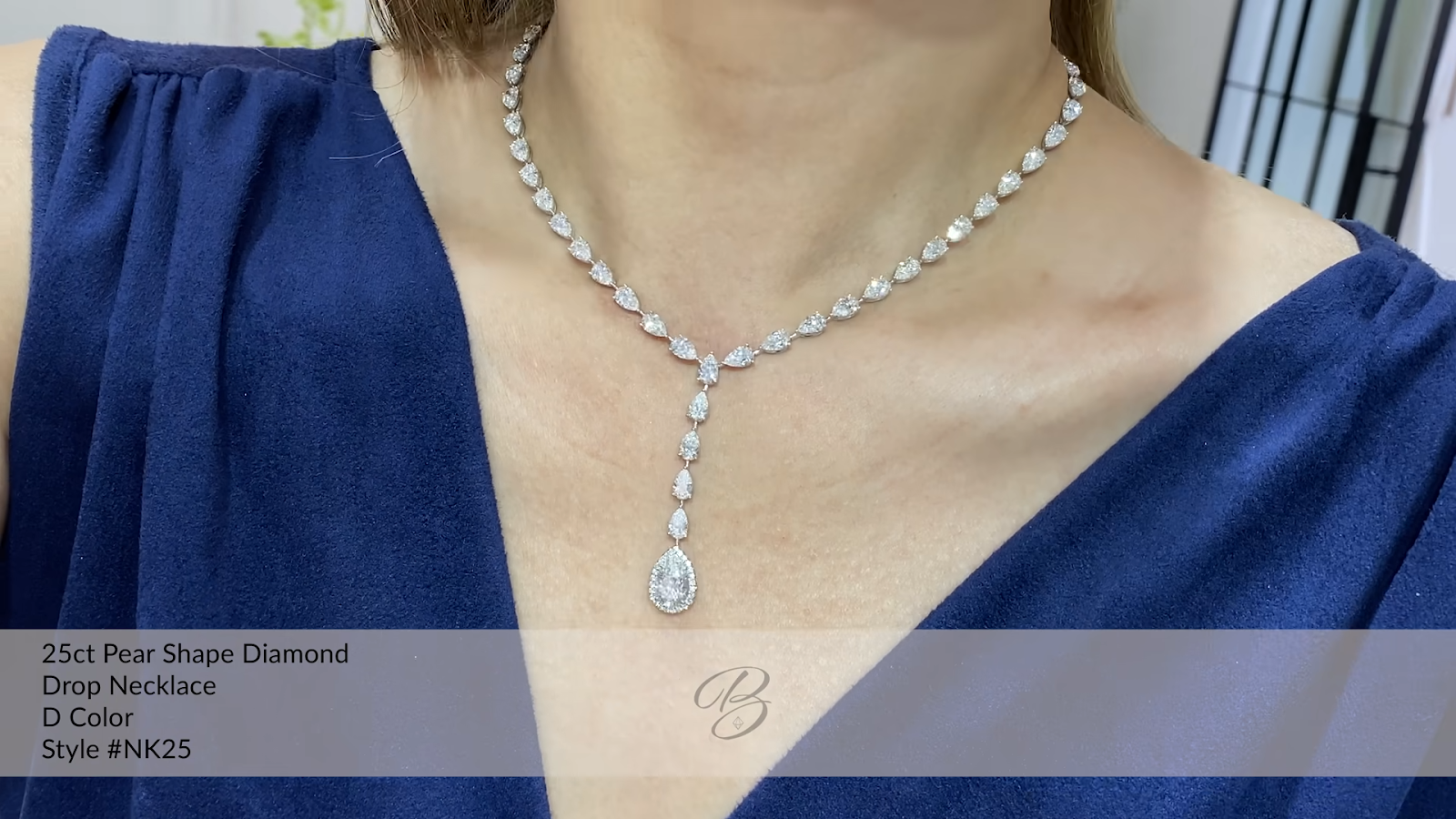

For instance, a pendant might benefit from a longer diamond, while a halo or three-stone ring could favor a specific ratio. And here's a pro tip: don't fixate solely on the oval ratio. There's actually a formula for achieving the perfect oval diamond that maximizes brilliance and sparkle.
The Formula For The Perfect Oval Diamond
Now, let's crack the code for achieving the perfect oval diamond. It all begins with the cut of the stone. While the oval ratio plays a role, the cut reigns supreme. A well-cut diamond will dazzle, regardless of its ratio. So, after considering the cut and ratio, don't forget about color and clarity.
Here's a key tip: Oval diamonds tend to reveal more color than their round counterparts. So, an H color oval may appear warmer than an H color round diamond. Keep this in mind as you navigate your diamond journey.
The Importance Of Craftsmanship
Now, let's address another crucial point: Fixating solely on the ratio. I've had clients who obsess over tiny differences in ratio, like 1.43 versus 1.44. But hold on a moment. Let's not overlook the overall beauty of the stone. Craftsmanship plays a significant role here too.
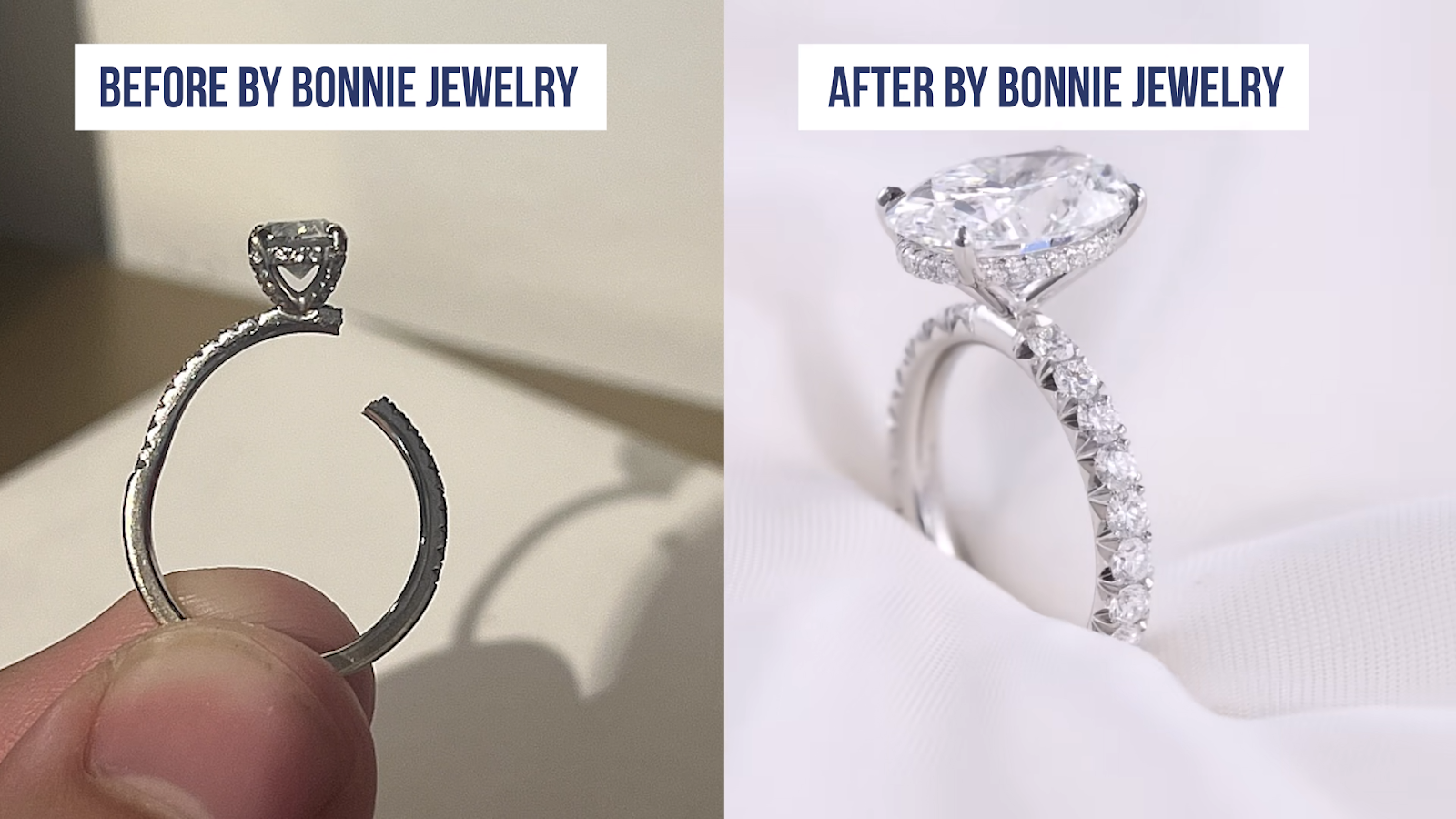

Picture this: You select the perfect diamond on paper, but if the craftsmanship of the setting isn't up to par, it could dampen the sparkle of your entire ring. I've seen it happen, and I've even made a video showcasing examples of poorly crafted oval rings.
Why You Should Work With A Jeweler
Alright, let's wrap up what we've covered today.
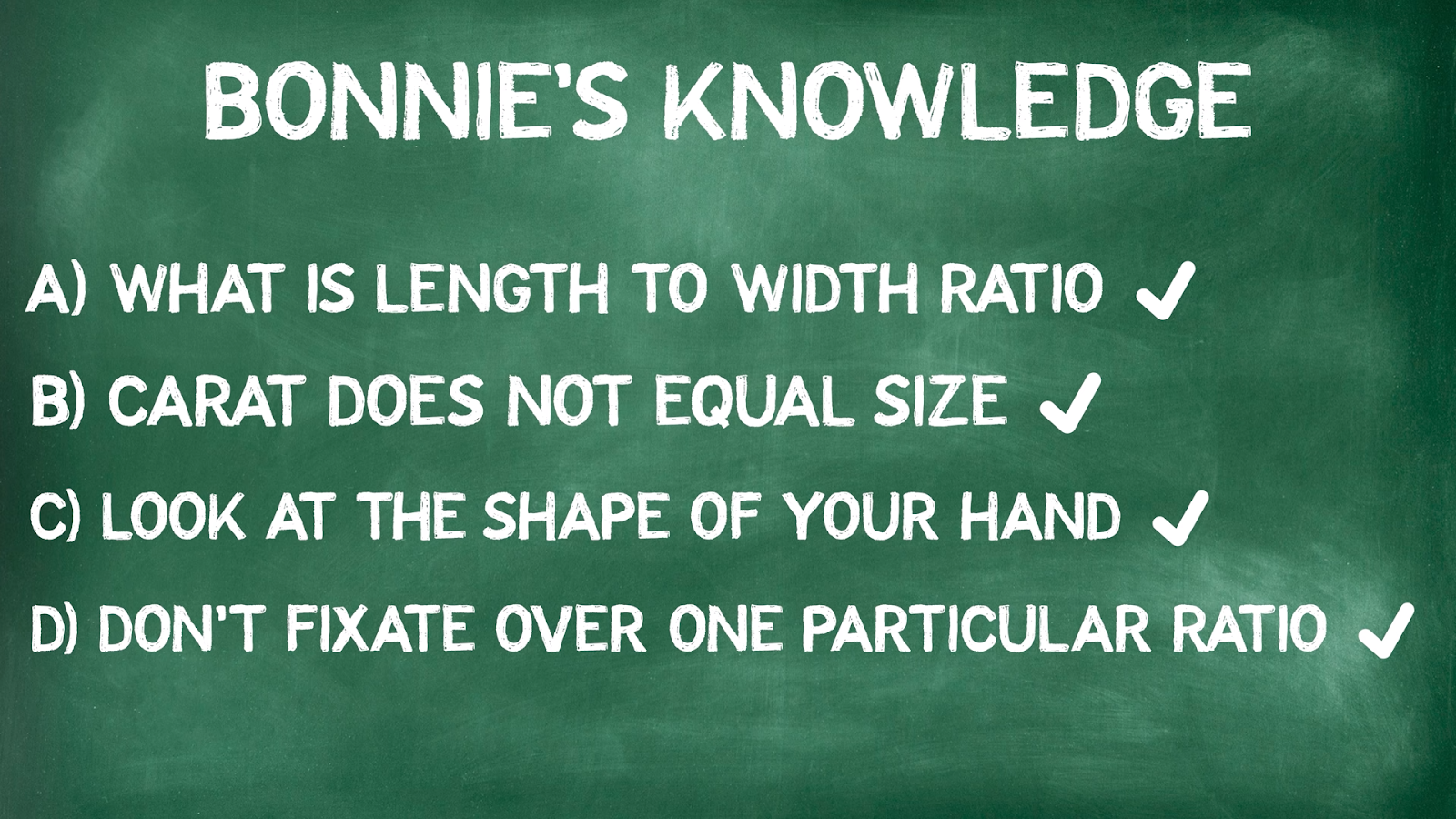

First off, we delved into the world of length-to-width ratio, giving you a clear understanding of its importance. Remember, carat weight doesn't always translate to size, so paying attention to the measurements is key.
Next, we emphasized the significance of a well-cut stone in maximizing its sparkle. And don't forget to consider the shape of your hand when selecting the perfect length-to-width ratio for your diamond.
Lastly, I want to stress the importance of not getting too fixated on one specific ratio. It's about finding the right balance. Now, when it comes to purchasing a fancy shape diamond online, it can be a daunting task. That's why it's crucial to work with someone you trust, whether it's a local jeweler or reaching out to us for assistance.
Remember, you don't have to navigate this journey alone. We're here to help you find the perfect diamond that you'll cherish for a lifetime.






